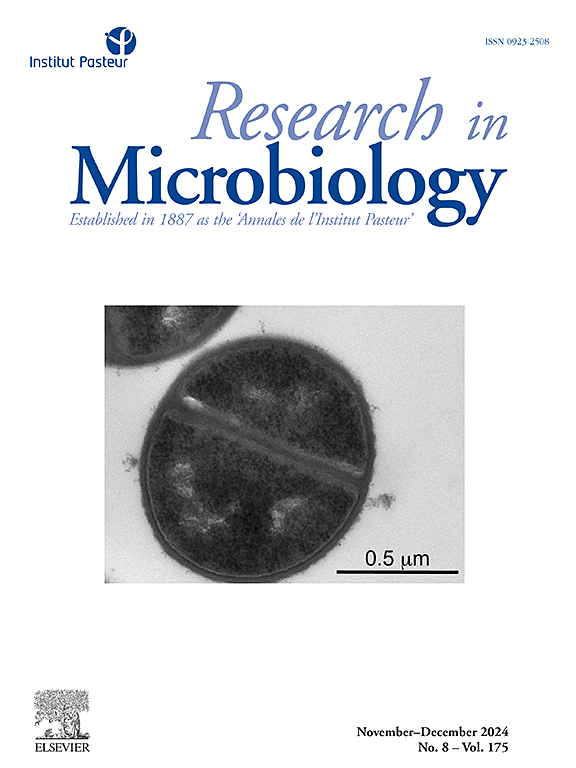乳酸菌AI-2/LuxS系统的功能多样性:对生物膜形成和环境恢复力的影响
IF 3.4
4区 生物学
Q3 MICROBIOLOGY
引用次数: 0
摘要
作为微生物通讯的关键组成部分,自诱导剂-2 (AI-2)信号影响乳酸菌(LAB)的几个生理过程,包括环境适应和生物膜形成。本文综述了由LuxS合成的AI-2在改善LAB生物膜和对恶劣条件的耐受性方面的各种贡献。luxS基因在几个LAB物种间的系统发育分析显示了AI-2的进化保守性和多样性。此外,LAB中的AI-2信号传导提高了对不利环境因素的抗性,包括pH波动、极端温度和抗菌药物。乳酸菌可以防御来自环境压力的有害影响。本文章由计算机程序翻译,如有差异,请以英文原文为准。
Functional diversity of AI-2/LuxS system in lactic acid bacteria: Impacts on biofilm formation and environmental resilience
A key component of microbial communication, autoinducer-2 (AI-2) signaling, affects several physiological processes, including environmental adaptation and biofilm formation in lactic acid bacteria (LAB). The multifarious contribution of AI-2, synthesized by LuxS, in improving biofilms and tolerance to hostile conditions in LAB has been investigated in this review. The evolutionary conservation and diversity of AI-2 are shown by a phylogenetic analysis of luxS gene among several LAB species. Furthermore, AI-2 signaling in LAB improves resistance to unfavorable environmental factors, including pH fluctuations, temperature extremes, and antimicrobial agents. Lactic acid bacteria could set off defenses against harmful impacts from environmental stresses.
求助全文
通过发布文献求助,成功后即可免费获取论文全文。
去求助
来源期刊

Research in microbiology
生物-微生物学
CiteScore
4.10
自引率
3.80%
发文量
54
审稿时长
16 days
期刊介绍:
Research in Microbiology is the direct descendant of the original Pasteur periodical entitled Annales de l''Institut Pasteur, created in 1887 by Emile Duclaux under the patronage of Louis Pasteur. The Editorial Committee included Chamberland, Grancher, Nocard, Roux and Straus, and the first issue began with Louis Pasteur''s "Lettre sur la Rage" which clearly defines the spirit of the journal:"You have informed me, my dear Duclaux, that you intend to start a monthly collection of articles entitled "Annales de l''Institut Pasteur". You will be rendering a service that will be appreciated by the ever increasing number of young scientists who are attracted to microbiological studies. In your Annales, our laboratory research will of course occupy a central position, but the work from outside groups that you intend to publish will be a source of competitive stimulation for all of us."That first volume included 53 articles as well as critical reviews and book reviews. From that time on, the Annales appeared regularly every month, without interruption, even during the two world wars. Although the journal has undergone many changes over the past 100 years (in the title, the format, the language) reflecting the evolution in scientific publishing, it has consistently maintained the Pasteur tradition by publishing original reports on all aspects of microbiology.
 求助内容:
求助内容: 应助结果提醒方式:
应助结果提醒方式:


